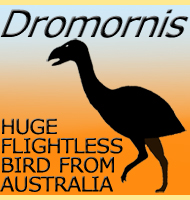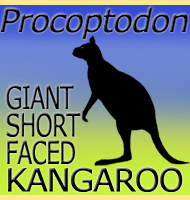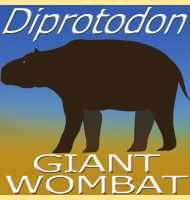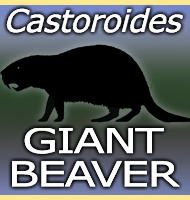


Protemnodon
Name:
Protemnodon.
Phonetic: Pro-tem-noe-don.
Named By: Richard Owen 1873.
Classification: Chordata, Mammalia,
Marsupialia, Diprotodontia, Macropodidae, Macropodinae.
Species: P. anak, P. antaeus, P.
buloloensis, P. goliah, P. hopei, P. nombe, P.
otibandus, P. parvus, P. snewiki, P. tumbuna.
Diet: Herbivore.
Size: Smallest species (P. hopei)
were 45 kg in weight, larger species approaching 110 kg in
weight.
Known locations: Australia, New South Wales,
Queensland, South Australia, Victoria - Jemmys Point
Formation, Nelson Bay Formation, Whaler's Bluff Formation.
Additionally Papua New Guinea - Otibanda Formation, and Tasmania.
Time period: Zanclean of the Pliocene through to the
Tarantian of the Pleistocene.
Fossil representation: Multiple individuals.
Protemnodon was in essence very much like a wallaby, though much larger in physical size. Protemnodon fossils are also known from Papua New Guinea making this genus one of the most geographically wide ranging genera of wallaby.
Further reading
- Ecological and evolutionary significance of sizes of giant extinct
kangaroos - Australian Journal of Zoology 54 (4):
293–303 - K. M. Helgen, R. T. Wells, B. P.
Kear, W. R. Gerdtz & T. F. Flannery - 2006.
-
Late Pleistocene Australian marsupial DNA clarifies the affinities of
extinct megafaunal kangaroos and wallabies. - Molecular Biology and
Evolution. 32: 574–584. - Bastien Llamas, Paul Brotherton, Kieren J.
Mitchell, Jennifer E.L. Templeton, Vicki A. Thomson, Jessica L.
Metcalf, Kyle N. Armstrong, Marta Kasper, Stephen M. Richards, Aaron B.
Camens, Michael S.Y. Lee & Alan Cooper - 2014.
----------------------------------------------------------------------------
Random favourites
 |
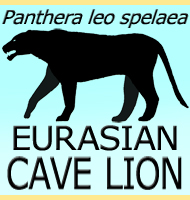 |
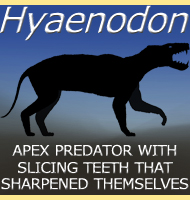 |
